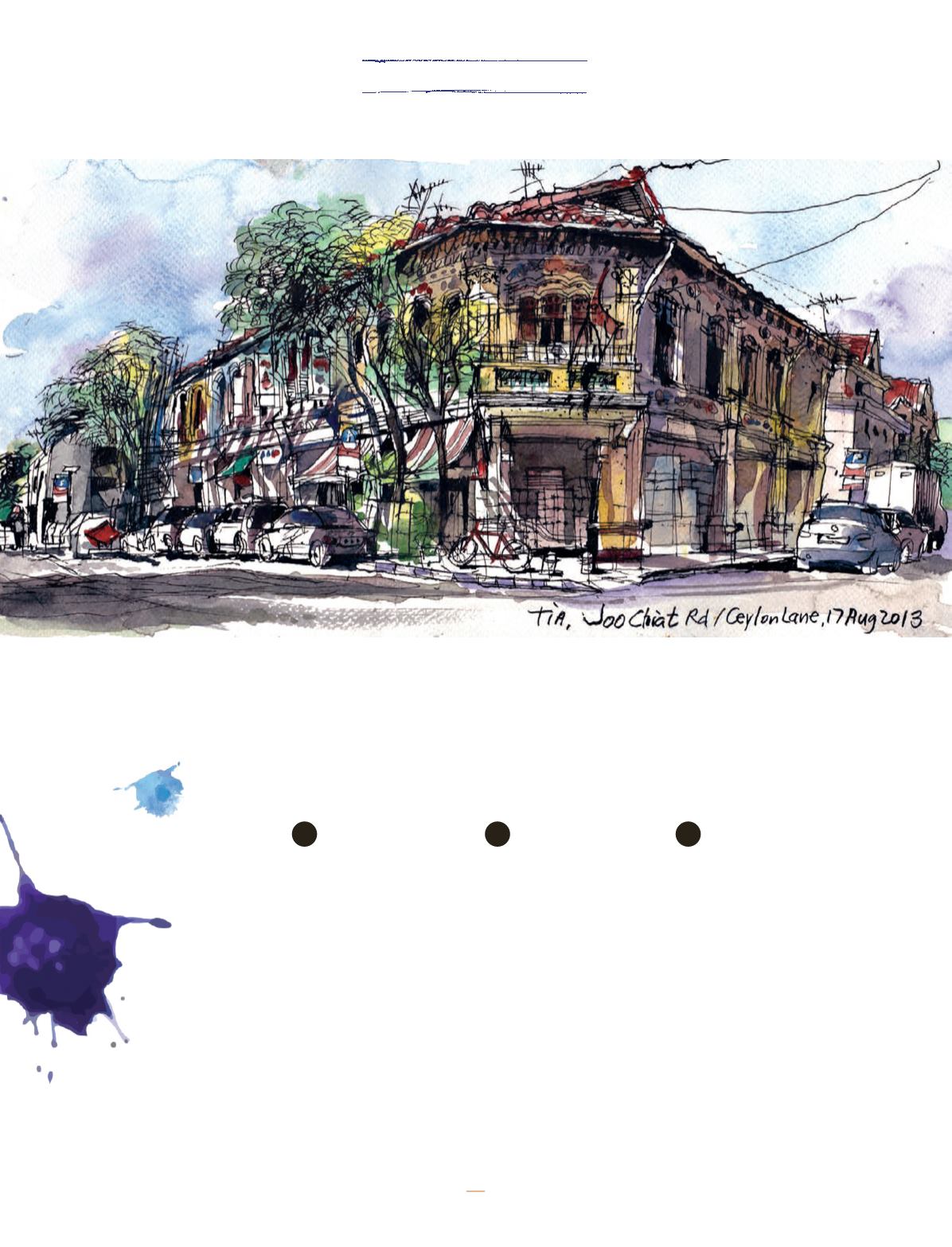
74
MORE SINGAPORE
heritage bites
Peranakan dishes typically combine Chinese, Malay and Indonesian produce, spices
and cooking techniques to form a unique blend of flavors. This kind of cooking is also
referred to as “Nonya”, the polite term for a Peranakan woman or the storied cuisine
that — after many days of pounding, blending and stirring — comes out of her kitchen.
Glory Catering
139 East Coast Road;
glorycatering.com.sg
For an introduction to
Peranakan cooking, stop
by this family-run eatery
which serves no-nonsense,
full-flavor Nonya comfort
food like
laksa
(spicy prawn
noodle soup) and
mee siam
(tangy, tamarind-flavored
soup with vermicelli
noodles). On the pavement
outside, Nonya dumplings
— a portable meal of
glutinous rice and pork
wrapped in a bamboo leaf
— hang on a cart to tempt
passersby.
Immigrants
Gastrobar
467 Joo Chiat Road;
immigrants-gastrobar.com
By late afternoon, Glory
usually sells out of its most
popular dishes. If you visit
Joo Chiat later in the day, a
tasty alternative is Immigrants
Gastrobar, where ingredients
like pandan, candlenut and
galangal figure prominently.
Chef Damian D’Silva uses
recipes from his childhood;
Peranakan favorites include
otak
—afishcakewrapped ina
banana leaf and grilled — and
ngoh hiang
, a blend of minced
pork, crab, prawns and spices.
ChinMee Chin
Confectionery
204 East Coast Road
No Joo Chiat food pilgrimage
would be complete without
a visit here. Generations of
aunties have been serving up
the island’s best Hainanese
kaya
toast in this corner
shophouse since 1925. Kaya
is a rich, thick coconut jam
that the rather sullen “aunties”
slather on home-made buns
toasted over charcoal. Add a
pat of butter, two soft-boiled
eggs and a steaming cup of
kopi
—sweet local coffee—and
you have one of Singapore’s
favorite breakfasts.
1
2
3


